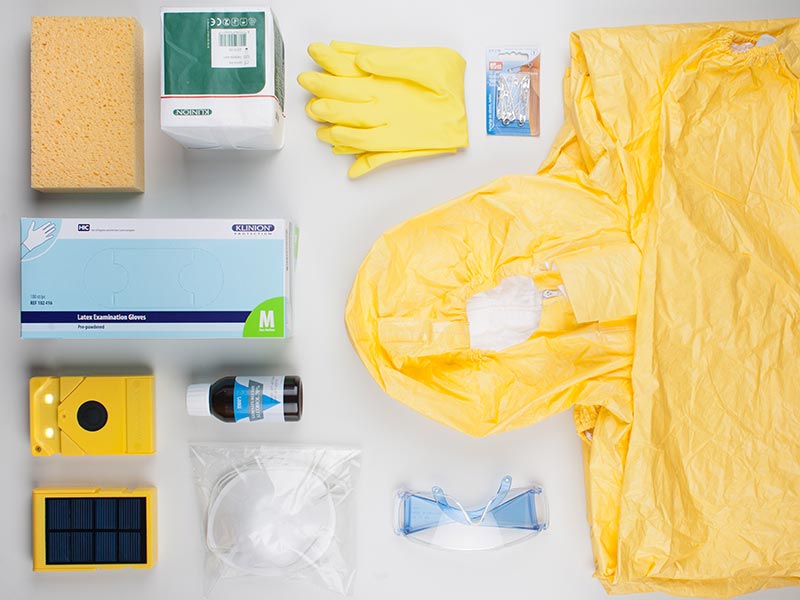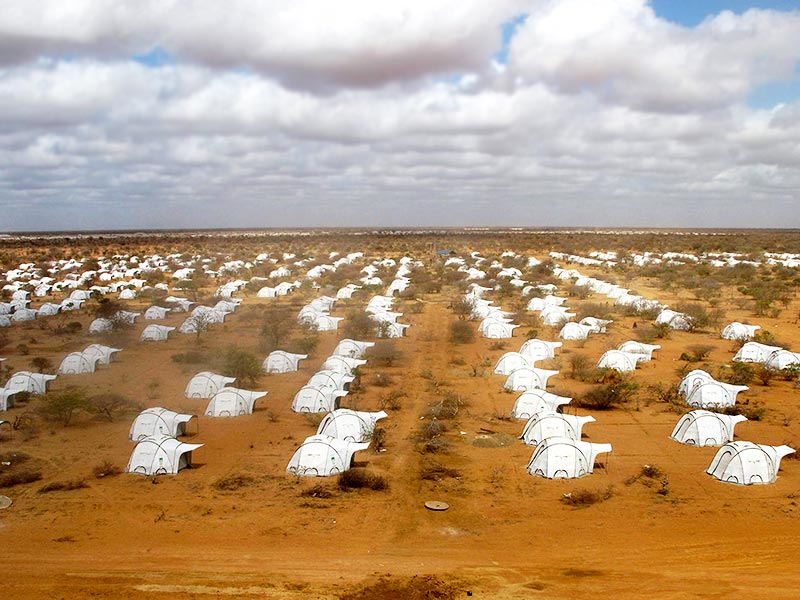
Doctors of the World ran an innovative Halloween campaign, More Than A Costume, to fund emergency medical support for affected areas

WakaWaka is currently distributing 10,000 Ebola prevention kits – containing a mask, HAZMAT clothes, gloves and solar light

Pharmaceutical company Primerdesign has developed an Ebola virus test kit, specifically designed to detect the 2014 strain

Emergency shelter specialist ShelterBox is on standby to help the UK Government and international medical charities contain the Ebola outbreak. Here their tents are shown in Kenya.
Ebola has claimed an estimated 5,160 lives in west Africa this year. Are there simple technologies that can help control the outbreak?
SUIT UP
Doctors of the World ran an innovative Halloween campaign, More Than A Costume, to fund emergency medical support for affected areas. Playing on the fact that an ‘Ebola suit’ was one of the most popular and topical Halloween costumes this year, the campaign encouraged people to donate elements of protective equipment ranging from gloves for US$1 to a full kit for US$250.
THE CAMPAIGN SLOGAN: ‘HERE IT’S A COSTUME: THERE IT SAVES LIVES.’
Doctors of the World are working with communities in Liberia and Sierra Leone to prevent Ebola transmission, raise awareness, and deliver essential protective equipment.
SHINE A LIGHT
WakaWaka, one of Kopernik’s technology producers, is currently distributing 10,000 Ebola prevention kits – containing a mask, HAZMAT clothes, gloves and solar light - to medical staff and rural health clinics in western Africa. Each kit costs US$39.
Limited access to electricity hampers the delivery of health services. In Liberia and Sierra Leone, two of the hardest-hit countries, more than 90 percent of the population is not connected to the electricity grid.
“YOU CAN’T FIGHT EBOLA IN THE DARK,” A WAKAWAKA SPOKESPERSON SAID.
TEST IT
Pharmaceutical company Primerdesign has developed an Ebola virus test kit, specifically designed to detect the 2014 strain.
Costing about US$4 per test, the kit hold 150 tests and can provide results within 90 minutes.
GIMME SHELTER
Emergency shelter specialist ShelterBox is on standby to help the UK Government and international medical charities contain the Ebola outbreak.
The company said the most pressing shelter need was for large-scale medical tents to create field hospitals.
ShelterBox has pre-positioned tents and other stock in Ghana, close to the worst-affected areas of Liberia, Sierra Leone and Guinea. Operations Director John Leach said further stock could be airlifted from Dubai if needed.
THE OUTBREAK
The Ebola epidemic came to global attention in March, when the World Health Organization (WHO) reported an outbreak of the virus in Guinea.
Since then, cases have been reported in neighboring Liberia and Sierra Leone, as well as Nigeria and Senegal. The cases in Nigeria and Senegal are considered contained, with no further spread in these countries.
New cases have been reported in Guinea, Liberia, and Sierra Leone.
To date, there have been more than 13,500 reported Ebola cases in west Africa, and more than 5,160 deaths.
THE IMPACT
The outbreak is not only claiming lives, it is also destroying livelihoods and disrupting the fragile economies of these countries. Additionally, it is drawing attention to just how under-resourced the medical systems of these countries really are.
Writing for The Conversation, Paul Munro and Greg van der Horst report:
“BEFORE THE OUTBREAK, SIERRA LEONE WAS ESTIMATED TO HAVE AROUND 120 PHYSICIANS SERVING ITS POPULATION OF 6 MILLION. THIS EQUATES TO AROUND TWO DOCTORS PER 100,000 PEOPLE. FOR A COMPARISON, AUSTRALIA HAS AROUND 390 PHYSICIANS PER 100,000.”
Sadly, five Sierra Leonean doctors have already succumbed to Ebola, with more currently infected by the virus.
While the immediate focus must be on containing the Ebola outbreak, the longer-term response must consider economic recovery and strengthening public healthcare in these countries.
It is a huge, complex development challenge. Simple technology alone won’t solve these problems, but it is one way to make daily life easier for people in very difficult situations.


